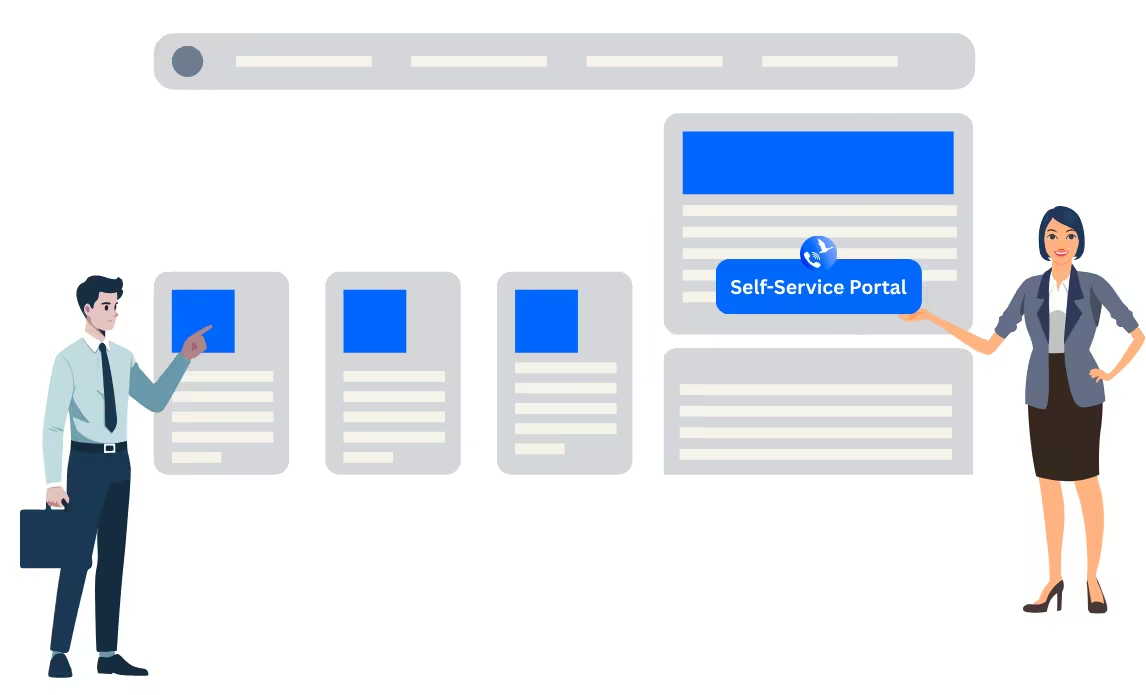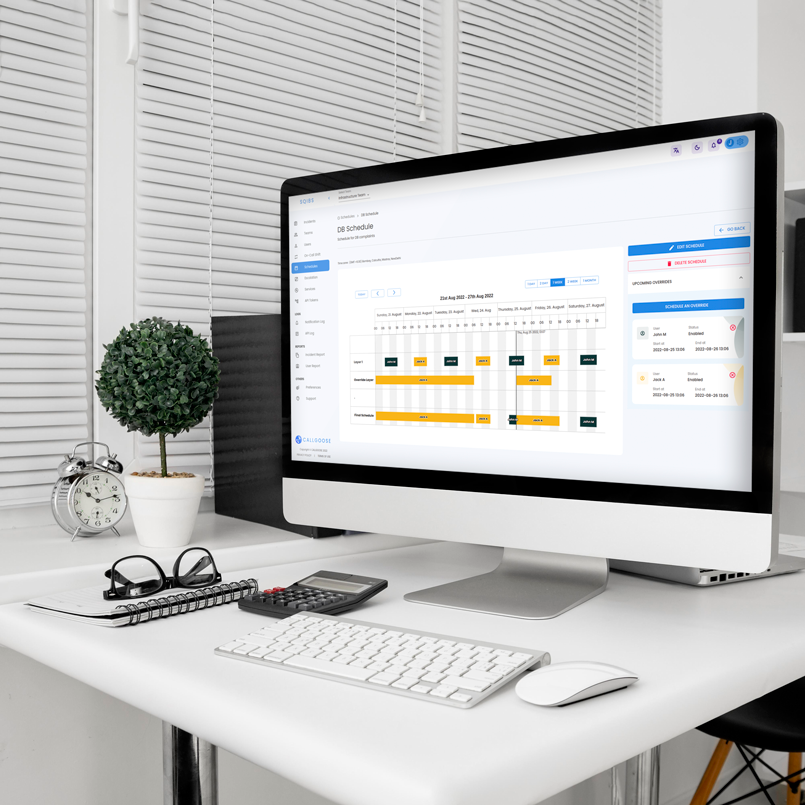
CALLGOOSE

CALLGOOSE
BLOG
06 December 2024 | Amelia Gaby
5 Minute Read
As IT systems become more complex, organizations require robust monitoring and observability tools to
ensure reliability and performance. From tracking network packets to monitoring logs across distributed
systems, these tools provide the insights needed to maintain seamless operations. However, integrating
data from these tools and acting on it efficiently requires an advanced automation platform. This is where
the Callgoose SQIBS Automation Platform comes in.
This blog explores various categories of monitoring and observability tools, including network packet
analysis and logging tools, and demonstrates how Callgoose SQIBS integrates with these systems to
optimize incident response and ensure service reliability.
Categories of Monitoring and Observability Tools
1. IT Software and Hardware Monitoring Tools
Monitor the performance of applications, operating systems, and hardware to ensure smooth functioning.
Examples:
2. Network Monitoring Tools
Track network performance, uptime, and traffic to ensure connectivity and prevent bottlenecks.
Examples:
3. Network Packet Monitoring Tools
Analyze and monitor network packets to identify anomalies, detect intrusions, and optimize network
performance.
Examples:
4. Application Performance Monitoring (APM) Tools
Ensure applications perform optimally by identifying bottlenecks and monitoring user experience.
Examples:
5. Database Monitoring Tools
Monitor query performance, uptime, and resource utilization for databases.
Examples:
6. Website Monitoring Tools
Track website uptime, performance, and user interactions.
Examples:
7. Operating System (OS) Monitoring Tools
Monitor resource utilization and system health specific to operating systems.
Examples:
8. Logging Tools for Centralized Observability
Logging tools aggregate and analyze system logs to detect and troubleshoot issues.
Examples:
9. Storage Monitoring Tools
Monitor the health and performance of storage devices and systems.
Examples:
10. Physical Server Monitoring Tools
Track the performance and reliability of physical server infrastructure.
Examples:
11. Edge and IoT Device Monitoring Tools
Monitor distributed edge computing devices and IoT sensors for performance and security.
Examples:
Challenges in Monitoring and Observability
1. Data Fragmentation:
Tools often operate in silos, making it difficult to gain a unified view of system health.
2. Alert Overload:
Excessive alerts overwhelm IT teams, increasing the risk of missed critical incidents.
3. Delayed Incident Resolution:
Manual workflows slow down incident detection and resolution.
4. Scalability Issues:
Managing logs and packet data at scale can overwhelm traditional systems.
How Callgoose SQIBS Elevates Monitoring and Observability
The Callgoose SQIBS Automation Platform integrates seamlessly with monitoring tools across all
categories, enabling businesses to centralize incident management, automate responses, and improve
operational efficiency.
1. Unified Integration with Monitoring Tools
How It Works:
Callgoose SQIBS supports API-based integrations for real-time data ingestion and action.
Examples of Supported Tools:
Example Use Case:
An enterprise integrates Callgoose SQIBS with Syslog-ng to monitor log data from distributed servers.
When an error pattern is detected, Callgoose SQIBS triggers an incident workflow, notifying the on-call
engineer via phone call and escalating unresolved issues.
2. Real-Time Incident Management
How It Helps:
Automatically identifies and responds to incidents, ensuring faster resolutions.
Features:
Example Use Case:
Callgoose SQIBS integrates with Wireshark to monitor packet anomalies. When a suspicious packet is
detected, the platform alerts the security team and initiates a workflow to block the IP address, preventing
potential breaches.
3. Advanced Alert Suppression and Deduplication
How It Helps:
Reduces alert fatigue by filtering and consolidating redundant notifications.
Features:
Example Use Case:
A network monitoring tool like PRTG generates multiple alerts during a DDoS attack. Callgoose SQIBS
consolidates these into a single high-priority notification, enabling teams to focus on the root cause.
4. Automation for Proactive Management
How It Helps:
Automates repetitive tasks such as service restarts, scaling, and log analysis.
Features:
Example Use Case:
Callgoose SQIBS analyzes logs from ELK Stack to detect failed login attempts. If the failure count
exceeds a threshold, it locks the account and notifies the admin via email.
5. Centralized Monitoring and Analytics
How It Helps:
Provides a unified dashboard for monitoring data from multiple tools.
Features:
Example Use Case:
A data center integrates Callgoose SQIBS with Grafana, SolarWinds, and ELK Stack, consolidating all
metrics into a centralized view to simplify decision-making.
Benefits of Using Callgoose SQIBS
1. Faster Incident Resolution:
Real-time detection and automated workflows minimize downtime.
2. Reduced Operational Overheads:
Centralized monitoring and automation streamline IT operations.
3. Improved Security:
Integration with logging and packet monitoring tools enhances threat detection and response.
4. Global Scalability:
Multi-language and multi-channel support ensure global team readiness.
5. Actionable Insights:
Advanced analytics enable continuous improvement in monitoring strategies.
Research Insight
A report by Forrester reveals that organizations using automated incident management tools reduce
downtime by 40%, saving significant costs. Callgoose SQIBS extends this benefit by integrating
seamlessly with diverse monitoring tools.
Final Thoughts
From network packets to log analysis, monitoring tools are essential for maintaining system reliability.
However, their true potential is realized only when integrated into a centralized incident management
platform. The Callgoose SQIBS Automation Platform empowers businesses to unify their monitoring
efforts, automate responses, and ensure seamless operations, making it a game-changer for modern IT
environments.
Ready to revolutionize your monitoring strategy? Explore Callgoose SQIBS and schedule a demo:
Callgoose SQIBS Automation Platform
Callgoose SQIBS is a cutting-edge automation platform designed to elevate your organization’s resilience, reliability, and operational efficiency. With powerful On-Call scheduling, real-time Incident Management, and Incident Response capabilities, it ensures your systems are always on and responsive. Whether you need Process Automation, Runbook Automation, Incident Auto-remediation, IT request automation, or Event-Driven Automation, Callgoose SQIBS empowers you with comprehensive solutions. Stay connected and in control with notifications via Mobile App (Android, iPhone), Email, SMS, Phone Calls in over 30+ languages across 200+ countries, and seamless integrations with Slack & Microsoft Teams. Empower your team to trigger, acknowledge, and resolve incidents directly from Slack & Microsoft Teams. Discover why Callgoose SQIBS is the superior PagerDuty alternative in the market.
By leveraging these tools and using Callgoose SQIBS Incident Management and Callgoose SQIBS Automation Platform , you can set up robust event-driven automation workflows to enhance efficiency, reliability, and responsiveness in your IT operations.
Refer to Callgoose SQIBS Incident Management and Callgoose SQIBS Automation for more details

BLOG
5m Read
Why the Callgoose SQIBS Self-Service Portal Stands Out from Competitors
02 September 2025
|
Tony Philip
Introducing the Callgoose SQIBS Self-Service Portal The Callgoose SQIBS Self-Service Portal is a next-generation, secure web platform where users whether employees, partners, or customers can directly...


CALLGOOSE
SQIBS
Advanced Automation platform with effective On-Call schedule, real-time Incident Management and Incident Response capabilities that keep your organization more resilient, reliable, and always on
Callgoose SQIBS can Integrate with any applications or tools you use. It can be monitoring, ticketing, ITSM, log management, error tracking, ChatOps, collaboration tools or any applications
Callgoose providing the Plans with Unique features and advanced features for every business needs at the most affordable price.
Unique Features